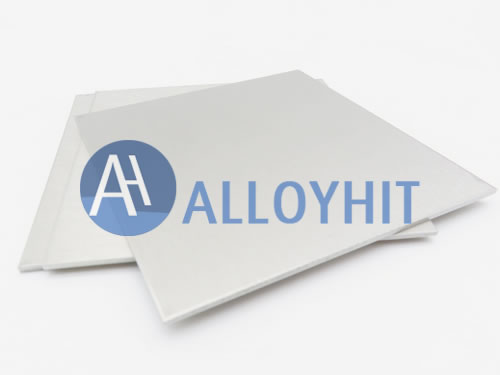
Mechanical properties of pure Titanium Sheets/Plate
| Material | Form | State | δ or d/mm | Sampling direction | Room temperature | ||||||
| σb/MPa | σP0.2/MPa | δ 5/% | ψ/% | α/(°) | αKU/kJ·m-2 | HBS | |||||
| ≥ | |||||||||||
| Ti | Sheets / Plates | Annealed | 0.3~2.0 2.1~5.0 5.1~10.0 |
LT | 280~420 | 170 | 45 30 30 |
- | 140 140 - |
- | - |
Heat treatment system of Titanium Sheets
1. Annealing sheet, strip, foil and tube: 630~815℃, 15~120min, air cooling or slower cooling;
2. Stress relief annealing 445~595℃, 15~360min, air cooling or furnace cooling. ZTA1: 600~750℃, 1~4h, furnace cooling;
3. Vacuum hydrogen removal annealing The vacuum working pressure in the vacuum furnace should be no more than 6.7×10-2Pa, the heating temperature should be 550~800℃, and the holding time should be 1~3h; when the thickness of the section is greater than 50mm, the holding time should be more than 3h.

Smelting of Titanium Sheets
Industrial pure titanium should be smelted in vacuum consumable arc furnace for more than two times.
Surface treatment process of Titanium Sheets
1. Cleaning The oxide skin formed when the material is formed or heat treated at a temperature above 600 °C needs to be surface cleaned. For the cleaning of this kind of oxide scale, first use mechanical sandblasting (corundum sand) to remove the surface oxide scale, and then pickle it in an aqueous solution of 2%~5% hydrofluoric acid and nitric acid. To prevent hydrogen absorption, the ratio of nitric acid to hydrofluoric acid should be greater than 10:1. During pickling, the solution temperature should be controlled between 40 and 60 °C.
The amount of hydrogen increase in pickling should be strictly controlled and cannot exceed 0.002%.
The cleaning of the oxide scale formed by forming or stress relief annealing of the material below 600 °C can obtain a clean surface by direct pickling in the solution.
2. Surface hardening When using titanium to manufacture parts with relative motion, in order to improve the wear resistance of the parts, the surface of the parts can be nitrided. The surface hardness of nitriding treatment can reach 600KHN.


 +86 13120915623
+86 13120915623